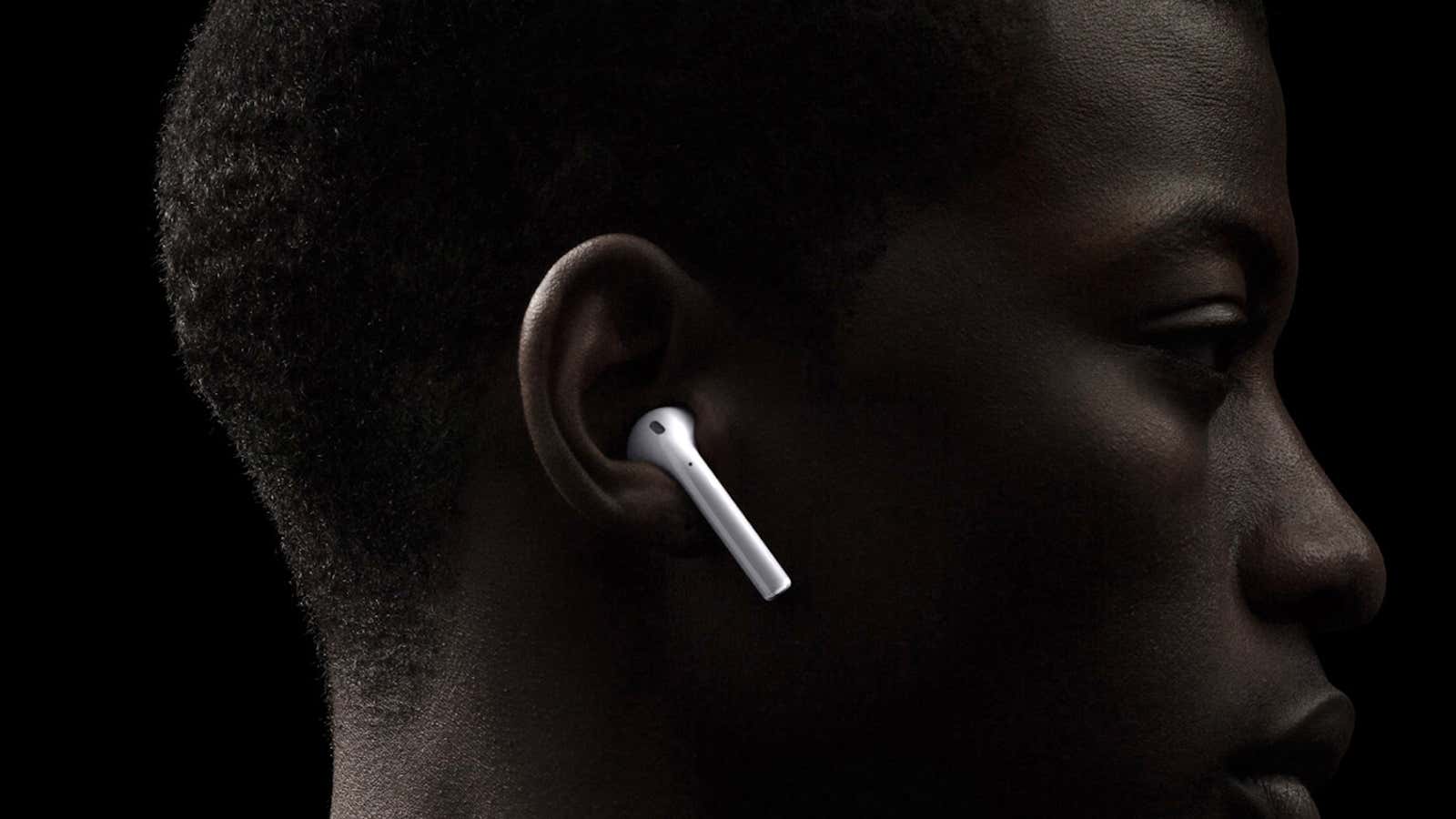Gone, officially, is the headphone jack from Apple’s new iPhone. Retired. Dead. Defunct.
May it rest in peace.
As much as users are griping (already) about the disappearance of the 3.5mm jack, which is widely used across many digital devices including Apple’s own laptops, the new options for listening to audio on iPhones—either headphones that plug into the iPhone 7’s Lightning port or wireless ear pieces—potentially offer vast improvements in sound quality.

Here’s why. In oversimplified terms, Apple designed its custom Lightning port to shift more power over to headphones, so the new iPhones are inviting smoother data transference as well as the opportunity for headphone makers to introduce new, innovative features. Tech Radar explains it this way:
With Lightning or Bluetooth, the audio signal is transferred to our headphones digitally—meaning that the signal isn’t degraded like it is with a traditional 3.5mm jack. Instead, the audio signals are decoded by the digital-analogue converter (DAC) in our headphones, pulling the bits apart and making them into the smooth analogue sound we know.
Simply put, Lightning cables are capable of transferring much more data [than Bluetooth or the 3.mm jack] which means higher fidelity audio in your ears.
So, Lightning-connecting headphones and wireless headphones both have the capacity to offer superior quality over what you can get out of the 3.5mm jack on iPhones right now.
To the average music listener, does that really make a noticeable difference? The short answer is yes, it can; users who’ve tested high-end Lightning-compatible headphones report a completely reimagined listening experience, with sounds coming through in ”crystalline,” “tangible,” and “expansive” form.
Wireless Bluetooth technology, too, can offer more pristine quality—and consumers are starting to prefer that option over traditional wired devices anyway, if headphone sales are anything to go by.
Audio engineers are actually applauding Apple for scrapping the headphone jack, and the decision should delight hardcore music enthusiasts who’ve complained for years about mediocre sound quality coming out of their iPhones.
There are downsides. Upgrading to new hardware can get expensive, and the Lightning port’s total lack of existence anywhere outside of Apple’s product universe (for which we can thank founder Steve Jobs’ meticulous and long-lived insistence on closed design) means people going for the Lightning-wired headphone option will be buying something that has limited use.
Wireless earphones come with their own set of cons, and at $159, Apple isn’t making its own AirPods cheap.
But the company’s controversial move isn’t just about the iPhone. It directly encourages third-party headphone makers—and other smartphone companies—to step up their game. At Apple’s big launch event yesterday (Sept. 7), VP of marketing Phil Schiller called the decision to abolish the headphone jack one born out of “courage.”
Though instantly mocked for it, Schiller wasn’t totally wrong. Apple is doing what many other companies have not yet had the guts to try—prodding to the forefront an upgrade that few people would’ve thought they needed otherwise.
Update, Sept. 9: Many readers have pointed out that that it is up to third-party headphone makers, and not the technology of the iPhone 7 itself by default, to deliver higher quality audio experiences. They also point out that current iPhones with the 3.5mm jack have mediocre sound quality audio because of the way Apple utilizes the jack. The language of this article has been updated to clarify both points.
